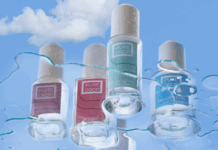Verescence, world leader in glass bottles for the Perfume and Cosmetics industries, announced today that it has joined the Science Based Targets (SBTi) initiative, committing to set a greenhouse gas (GHG) emissions reduction target by 2022 in line with the recommendations of the scientific community.
Four years after the entry into force of the Paris Agreement, adopted following COP 21, which saw states agree to fight global warming, 798 private sector companies have joined the Science Based Targets initiative. Verescence is the first glass group for luxury perfumery and cosmetics to commit.
The result of collaboration between the Carbon Disclosure Project (CDP), the World Resources Institute (WRI), the World Wildlife Fund (WWF) and the United Nations Global Compact, the Science Based Targets initiative encourages companies to set greenhouse gas emission reduction targets based on scientific data, in order to meet the objectives of the Paris Agreement: to keep the rise in global temperatures well below 2°C by the end of the century, and to continue efforts to limit warming to 1.5°C.
Having set an initial series of targets for reducing its CO2 emissions (Scope 1: direct emissions & Scope 2: supplied energy emissions) for the period 2016-2022, Verescence aims to go even further by committing to emission reduction targets aligned with the recommendations of the scientific community.
Thomas Riou, Chairman and CEO of Verescence, said: "In line with our long-standing commitments to sustainable development, our Group is taking another step forward by joining the Science Based Targets initiative. Verescence is committed to the fight against global warming. Our CSR strategy is a vector of motivation and innovation for our employees, giving greater perspective to our contribution and our actions."
Alain Thorré, Verescence's CSR Director, commented: "Following this commitment, we will define targets for reducing our greenhouse gas emissions - primarily CO2 - based on the latest scientific data. These targets will then be submitted to the SBT initiative for validation. This will allow us to complement and validate existing and future targets with science."








